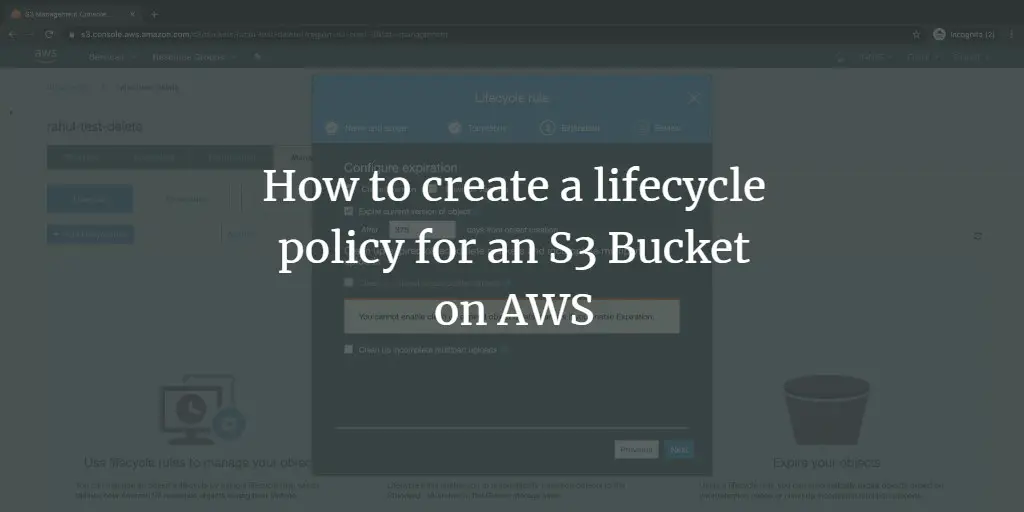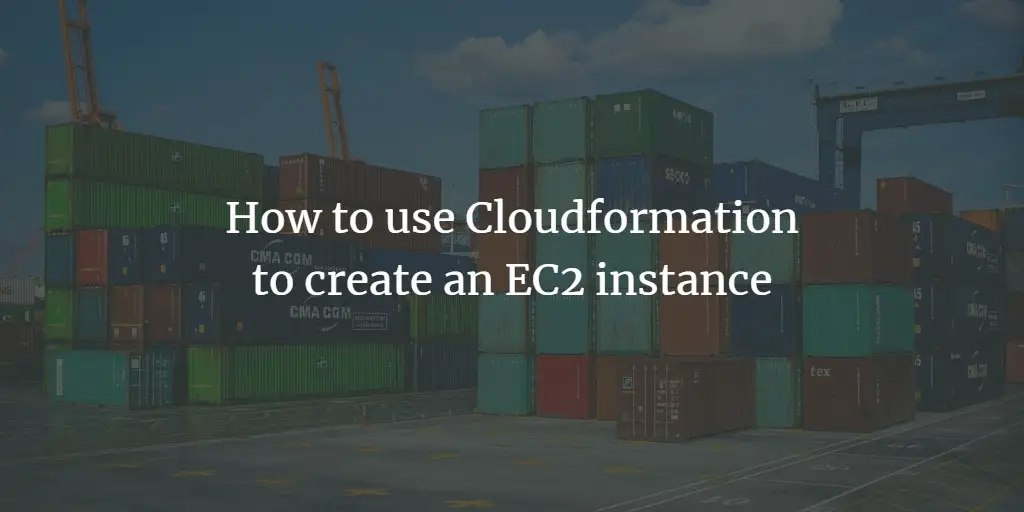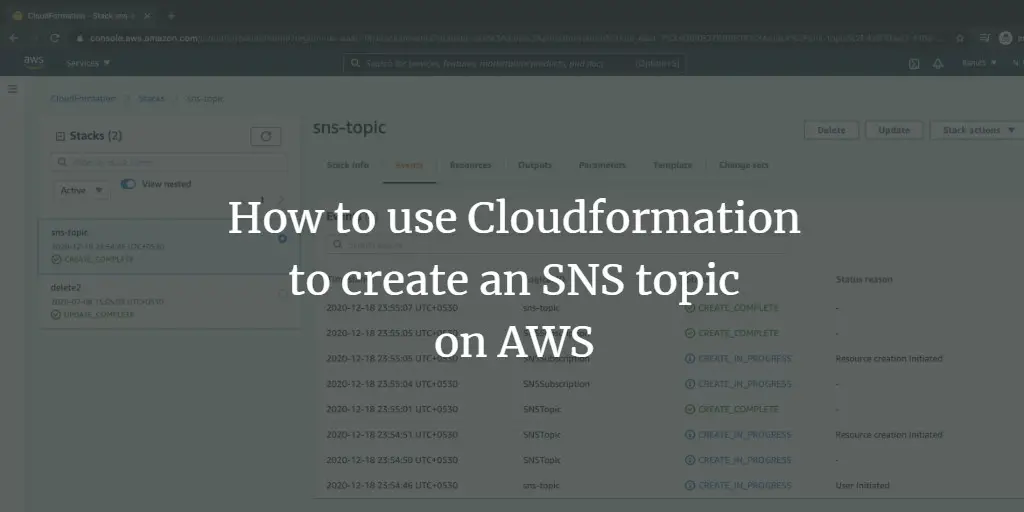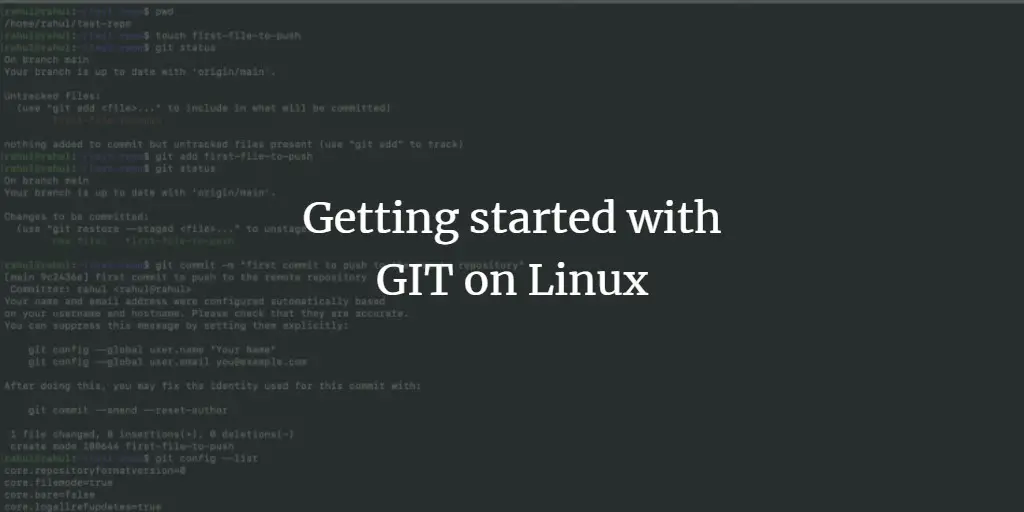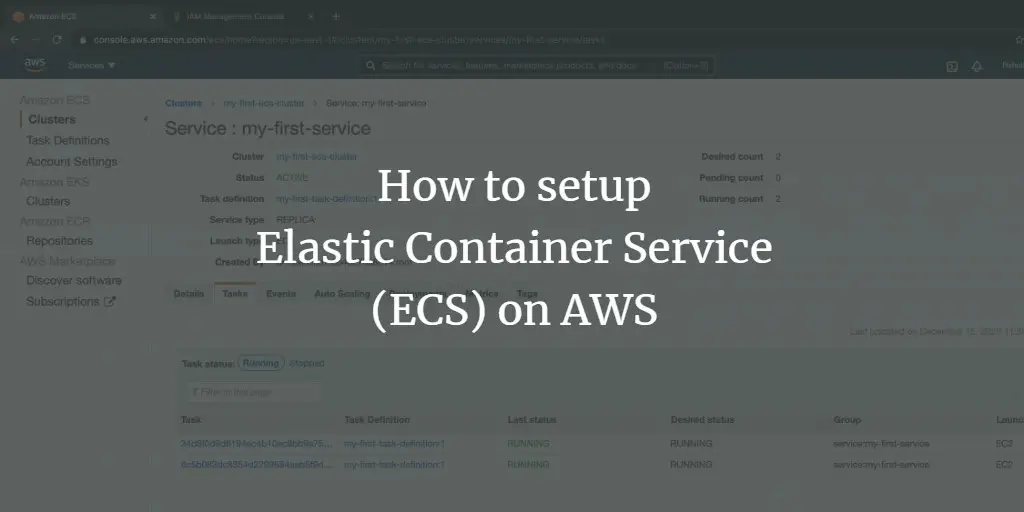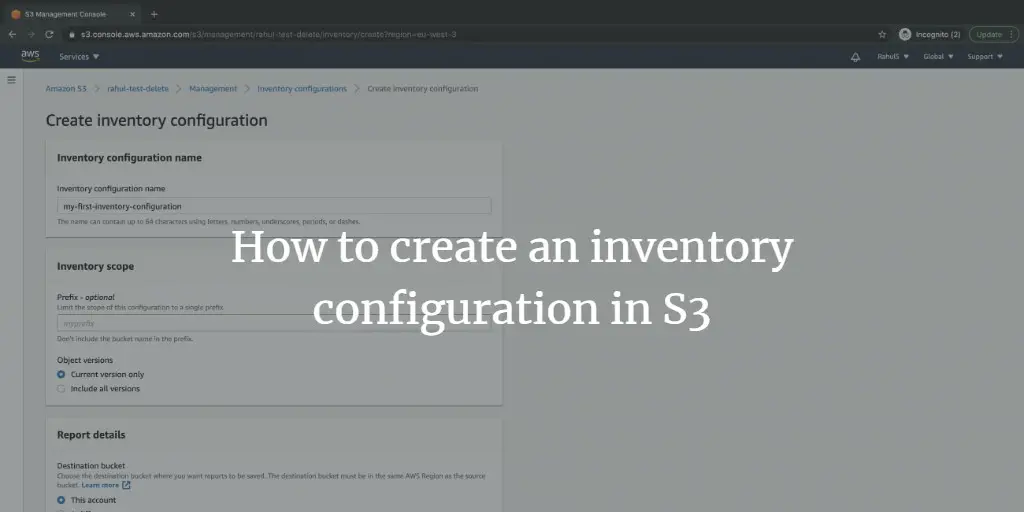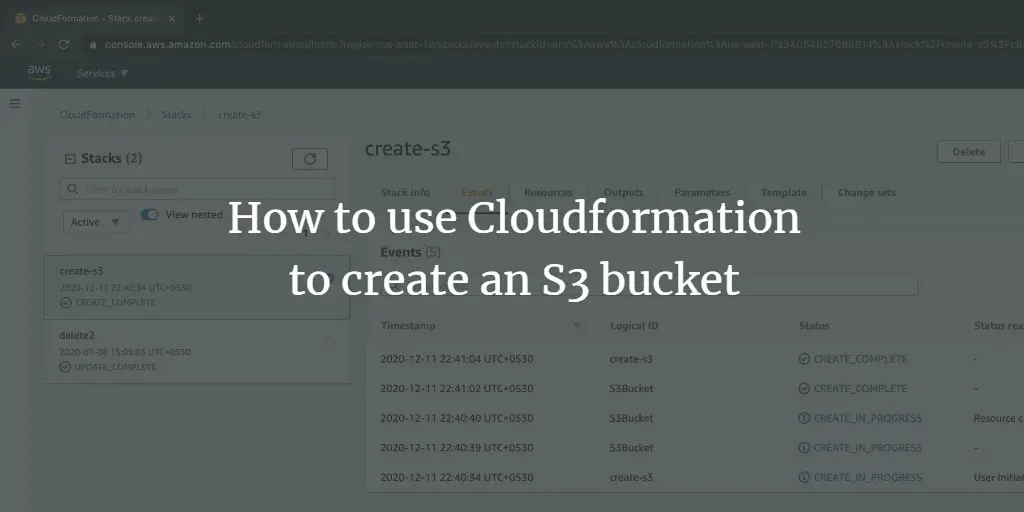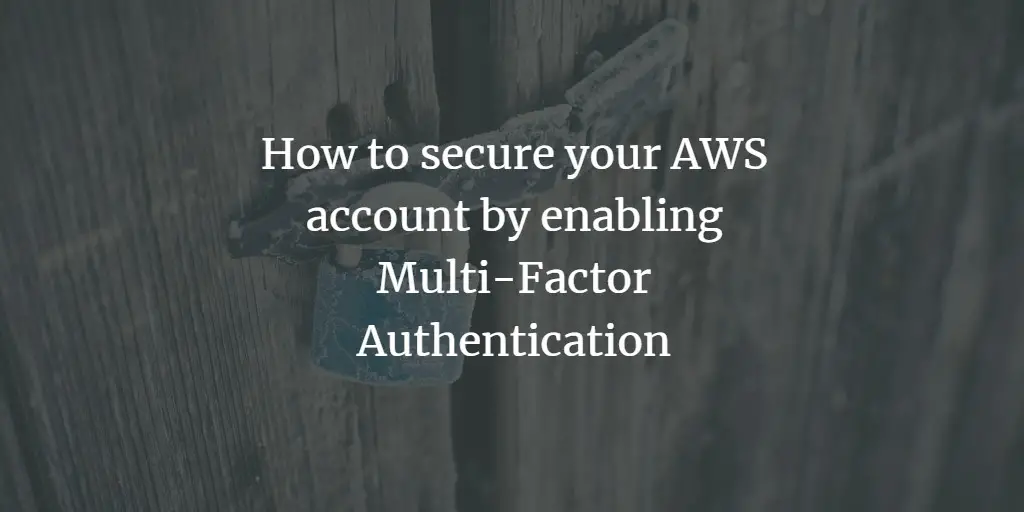Articles by Rahul Shivalkar
-
How to create a lifecycle policy for an S3 Bucket on AWS
Author: Rahul Shivalkar • Tags: cloud • Comments: 0In this article, we will see the steps to move objects (Transition Action) to Glacier after 10 days of creation and delete(Expirations Action) them after 365 days of creation.
-
How to use Cloudformation to create an EC2 instance
Author: Rahul Shivalkar • Tags: cloud • Comments: 0In this article, we will create an EC2 instance with the latest Linux AMI using Cloudformation hence knowing the basics of cloud formation is required.
-
How to create Cloudwatch alarms for an S3 Bucket on AWS
Author: Rahul Shivalkar • Tags: cloud • Comments: 0Cloudwatch provides Storage Metrics and Request Metrics for S3 Buckets. Storage Metrics come up with no extra cost and provided once a day whereas Request Metrics are available at 1-minute intervals and incur charges.
-
-
How to recover AWS account access if the MFA device is lost
Author: Rahul Shivalkar • Tags: cloud • Comments: 1It is recommended to enable Multifactor Authentication (MFA) for your AWS account. MFA is used to secure your AWS account, it adds an extra layer of security to the account. This guide shows you how to access your account when the 2nd-factor device is lost.
-
How to use Cloudformation to create an SNS topic on AWS
Author: Rahul Shivalkar • Tags: cloud • Comments: 0AWS SNS is a Simple Notification Service. It can be used by Cloudwatch to send alert emails. In this article, we will create an SNS topic using Cloudformation and subscribe to an email endpoint.
-
Getting started with GIT on Linux
Author: Rahul Shivalkar • Tags: linux, programming • Comments: 0Git is a distributed version control system. It is used for tracking changes in any files. It was designed for coordinating work among programmers operating on source code during the software development process. In this article, I will show you the commands to perform basic operations on a Git repository.
-
How to setup Elastic Container Service (ECS) on AWS
Author: Rahul Shivalkar • Tags: cloud • Comments: 0Elastic Container Service is a fully managed container orchestration service provided by AWS. In this article, we will create an ECS cluster and deploy a sample Nginx application onto it. We will create a test cluster to understand the cluster setup. You are advised to set up a production cluster with a customized configuration as per the requirement.
-
How to create an inventory configuration in S3
Author: Rahul Shivalkar • Tags: cloud • Comments: 0In this article, we will create an inventory configuration to store object metadata in CSV format. We can store reports in the same bucket as the source bucket, but we will use a different bucket to store this than the bucket for which we will be creating this inventory configuration.
-
How to use Cloudformation to create an S3 bucket
Author: Rahul Shivalkar • Tags: cloud • Comments: 0There are multiple ways in which you can create an S3 bucket on AWS. Cloud formation is one of the Infrastructure as Code (IaC) ways to do this. In this article, we will explore several options available in Cloudformation to create an S3 bucket.
-
How to secure your AWS account by enabling Multi-Factor Authentication
Author: Rahul Shivalkar • Tags: cloud • Comments: 0In this article, we will see the steps to enable Multi-factor Authentication using a virtual device. A virtual Multi-factor Authentication device is nothing but an application or software running on your phone. This application generates a six-digit code that needs to be entered while logging into the account.

